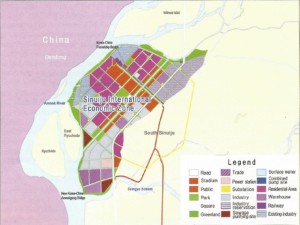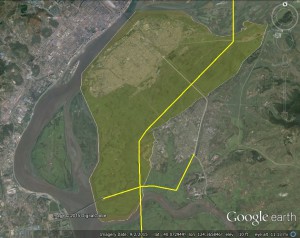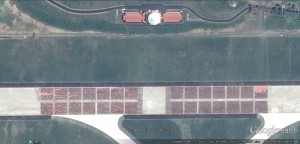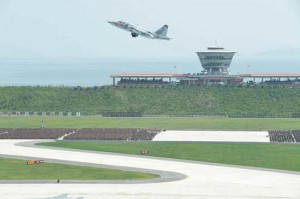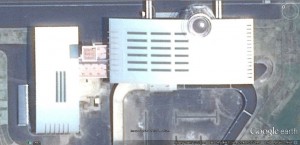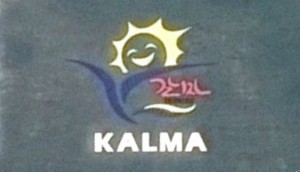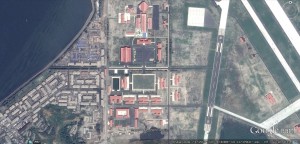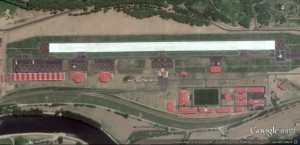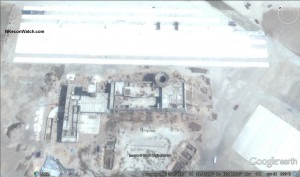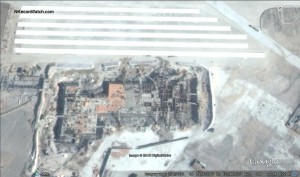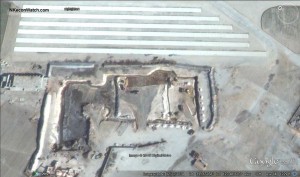UPDATE 4 (2017-8-6): New Google Earth imagery of the Kalma Street project dated 2017-5-19 shows signs of life, but overall stagnation. Although work continues very slowly on the right-most apartment block, it has not progressed at all for the remaining three original foundations dug in early 2016. However, sometime between 2017-2-14 and 2017-5-19, preparatory work was begun for yet another building (Outlined in red below):
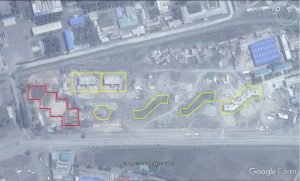
UPDATE 3 (2017-3-7): New Google Earth imagery of the Kalma Street project dated 2016-12-8 shows very little observable progress.
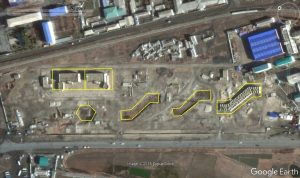
The only visible progress that appears to have been made since February is that the right-most apartment block appears to have been raised to its second or third floor. Maybe some interior work has been done on the two buildings in the upper-left corner.
UPDATE 2 (2016-7-4): Google Earth imagery of Kalma Street dated 2016-5-26 has been published. There has been some modest progress on the project since 2016-2-26:
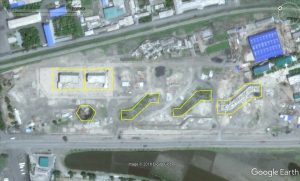
The exterior of the two buildings in the upper left is near completion. Additionally, construction on the right-most apartment building has begun.
UPDATE 1 (2016-4-3): Google Earth has new imagery from 2016-2-26 of the Kalma Street construction site. I posted material on this project in Radio Free Asia (in Korean). Here is some information in English:
Progress has been made on the Kalma Street project, but not much. So far it appears that six buildings are under construction:
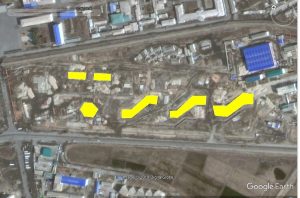
Most of this construction is simply preparatory work on laying the foundation (digging ditches). The most progress has been made on the two rectangular buildings in the top-left corner. In these buildings, walls are going up on the ground-level floor.
There is also a large staging ground for workers and supplies nearby:
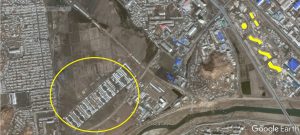
ORIGINAL POST (2015-6-30): Pictured below on Google Earth is the Kalma Street construction site in Wonsan
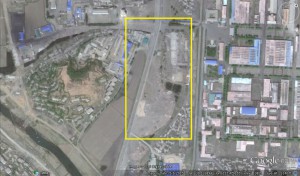
According to KCNA (2015-5-20):
Ground-breaking Ceremony of Construction in Wonsan Area Held
Wonsan, May 20 (KCNA) — The Wonsan area will turn into a world-famous tourist city under the plan of the Workers’ Party of Korea (WPK).
A ground-breaking ceremony took place in Kalma Street on Wednesday.
Present there were Vice-Premier Kim Yong Jin, officials concerned, builders and citizens of Wonsan.
A reporter and speakers said it was the lifetime wishes and behests of President Kim Il Sung and leader Kim Jong Il to spruce up Wonsan area.
Marshal Kim Jong Un launched a big operation for building Wonsan area into a world famous tourist city, model of city formation, with noble intention to bring about a fresh turn in building a highly civilized socialist nation and dynamically aroused the whole party and country to the drive for doing so, they said.
They called for launching vigorous campaigns to carry out the behests of Kim Il Sung and Kim Jong Il and defending the party’s policies to powerfully demonstrate the might of Songun Korea in construction once again.
At the end of the ceremony they started projects including dwelling houses at the entrance of Kalma Street in Wonsan City.
Here is coverage by the Institute for Far Eastern Studies (IFES):
Wonsan: Start of Construction as ‘Global Tourist City’
The state-run Korean Central News Agency (KCNA) has reported that the groundbreaking ceremony for the Wonsan region took place on May 20, 2015 on Wonsan city’s Kalma Street.
The KCNA explained that “in accordance with the plans of the Korean Workers’ Party, the Wonsan region will be vigorously transformed into a global tourist city.” It also reported that Vice Premier of the Cabinet Kim Yong Jin was in attendance at the groundbreaking ceremony.
According to attendees at the ceremony, “The proper management of the Wonsan region is the will of Comrade Kim Il Sung and Comrade Kim Jong Il as well as their earnest dying injunction.” They also stressed that “Comrade Kim Jong Un is committed to bringing about a new change in the construction of a civilized socialist state and has unfolded a magnanimous strategy for managing the Wonsan region as a model of city development and global tourist cities.”
The KCNA reported that after the ceremony ended construction was started on private homes near the entrance to Kalma Street.
The ‘Wonsan-Kumgangsan Tourist Region’ was announced as a central-level Special Economic Zone (SEZ) on June 11, 2014 by way of an ordinance by the Standing Committee of the Supreme People’s Assembly (SPA). It is part of the large-scale tourism belt that includes Wonsan district, the Masikryong Ski Resort, Ullim Falls, and the Sogwansa, Tongchon, and Kumgangsan districts.
The KCNA confirmed that the Wonsan development was the “will” and “dying injunction” of Kim Il Sung and Kim Jong Il, offering as evidence the fact that Kim Jong Il made the development of the Wonsan-Kumgangsan Tourist Region a recent priority of North Korea’s foreign economic sector.
In his 2015 New Year’s address, Kim Jong Un proclaimed to the people, “We need to multilaterally develop foreign economic relations and actively push forward the development of economic development zones like the Wonsan-Kumgangsan Tourist Region.” Also, in February 2015, the Workers’ Party of Korea (WPK) Central Committee and Central Military Commission presented ‘joint slogans’ for the 70th year anniversary of the country’s liberation and the Party’s founding. Among those presented was the slogan, “Let’s actively push forward the economic development of the Wonsan-Kumgangsan Tourist Region!”
In May 2015, North Korea took the ‘18th Pyongyang Spring International Product Exhibition’ as an opportunity to hold an investment briefing session regarding the development of the Wonsan-Kumgangsan Tourist Region. Another on-site investment briefing at Kumgangsan is slated for six days beginning May 25, 2015.
Regarding the upcoming briefing, O Ung Gil, general manager of the Wonsan Area Development Corporation, said, “At the investment briefing, topics such as the favorability of the development zone (which has abundant tourist attractions), the legal environment, its current state, and the overall development plan will be revealed. […] All entrepreneurs and businessmen who have an interest in development in the region are welcome to attend.”

